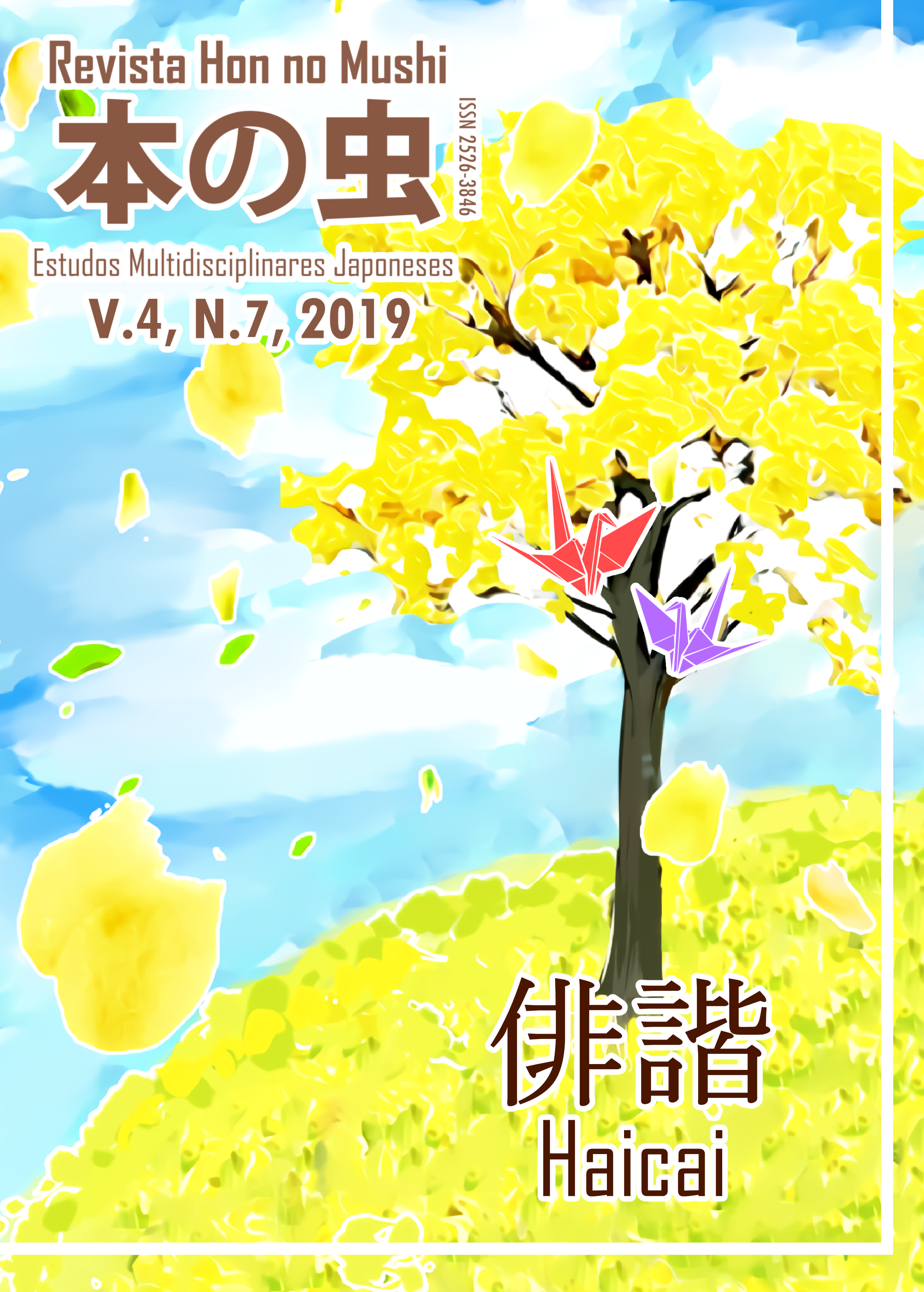Vol. 4 No. 7 (2019): Hon No Mushi - Estudos Multidisciplinares Japoneses - Haikai ou Haicai?

Hon no Mushi Journal - Japanese Multidisciplinary Studies, an important national journal, Qualis B3, is a critical and reflective space that dialogues with diverse scientific studies, as well as new knowledge in the fields of Japanese literature, teaching, language and culture. In this perspective, Volume 4, Number 7, coordinated by Professors Cacio José Ferreira and Rodrygo Yoshiyuki Tanaka, from the Federal University of Amazonas, gives significant prominence to haiku (俳句), a unique thread in the universe of Japanese poetry and haiku, a Brazilian production that incorporates the elements of traditional Japanese poetics.
Mirror of the tanka, the conciseness of the haiku intensifies and is based on the writing of Matsuo Bashō (1644-1694), achieving worldwide success in modernity. According to Tsuneyuki Ooi, in Haiku tsukuru tanoshimu happyou suru, at the height of Matsuo Bashô and Issa Kobayashi, the haiku, known as hokku (発句) was called haikai (俳諧). However, in the Meiji era, it was named haiku. The haikai thread comes from the renga (連歌).
In this perspective, the works published here comprise singular analyzes by specialists and researchers, both students and teachers, discussing around haiku. The articles expand the debates that already exist around Japanese poetry and scientific research. Thus, the publication of number 7 is called the Thematic Section: Haikai . However, in addition to articles that address aspects of Japanese poetry, there are other publications, covering free themes and translation.



